Garden Design for Slopes
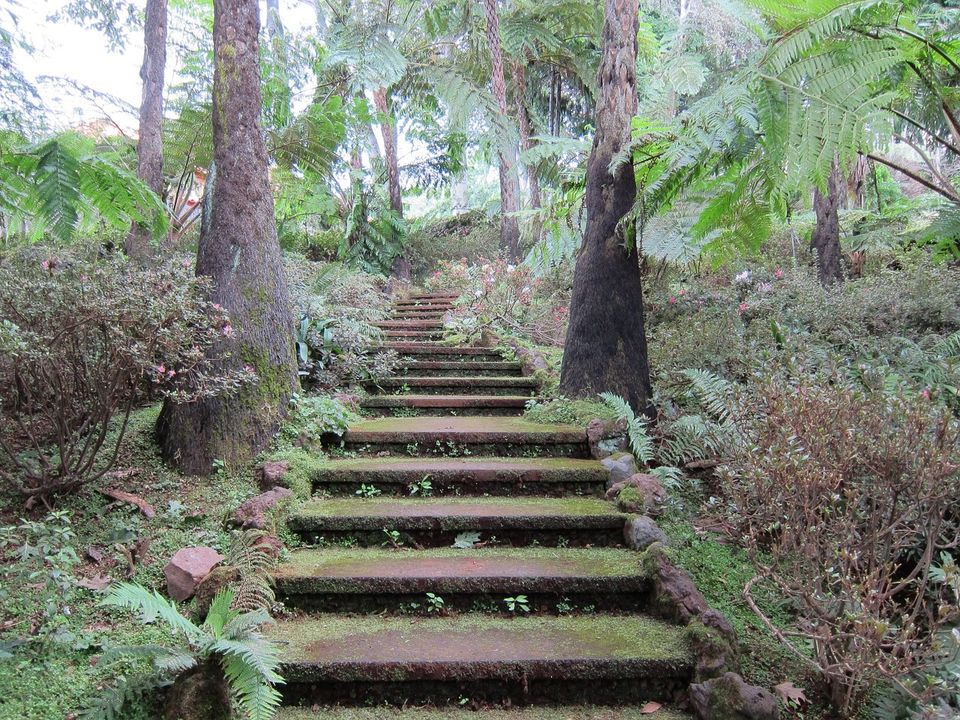
Designing a garden on a slope can be challenging. While there are a number of aesthetic choices we can make, there are technical aspects that should be addressed first. The most important technical issues with garden slopes are erosion and drainage.
Erosion
All slopes are susceptible to erosion. When rain hits topsoil and mulch or other natural debris, it can cause splash erosion and sheet erosion.
Splash erosion is caused by the impact of raindrops. Rain can scatter soil particles as far as 2 ft (0.6m) at a time. As illustrated in the diagram below, dispersed soil particles on a slope will travel further downhill, which will erode the surface. The best way to mitigate this is by slowing the velocity of rainfall on the slope. A leafy canopy can assist with this, with the leaves and stems of trees and shrubs capturing water for it's own consumption. Excess water reaches the ground in a much reduced velocity as "stem flow", where it will be absorbed by the roots of the canopy plants. A slope planted with a mixture or trees, shrubs and groundcovers can help to slow down the rainfall.
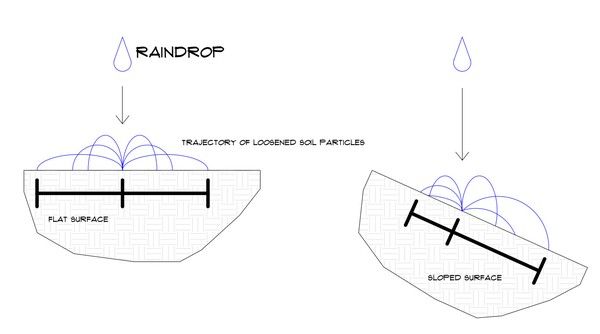
Sheet erosion is when the entire upper layer of soil is swept downhill by sheets of water. This happens when the soil is loose and is saturated to the point that it cannot absorb anymore water and the rainfall will start to travel down the slope, bringing the soil with it. This can also happen with unsaturated slopes that are simply too steep to allow the rainfall to percolate into the soil before it runs off down the hill. One of the worst examples of sheet erosion are mudslides, particularly when sheet erosion occurs on a recently burned area.
If you are working on an unfamiliar slope that does not have any visible signs that it is suffering from erosion, you should assess the slope's stability. The simplest test is to see if you can easily walk up the slope. If it is steep and loose, the soil will not feel secure under your feet, indicating that erosion is a very real risk. Even when the soil feels pretty solid, if the slope is too steep to walk on, you will have a hard time planting and maintaining the area. A 2:1 slope that drops 2 meters/ft for every 1 vertical meter/ft is considered the maximum steepness of a slope that can hold plants. Slopes steeper than 2:1 will require structural support with retaining walls. Personally I find that a 2:1 slope is too steep to easily manage a planted slope because unless you have very well-draining soil a lot of water will run-off the slope quicker than can be absorbed by the plants. A slope of 3:1 is what I would consider the maximum to support a planted slope.
Managing Steep Slopes to Mitigate Erosion
If your slope is steeper than 2:1, you should consider structural support. Retaining walls can be used to raise the level of the soil behind it to reduce the angle of the slope. If your slope requires retaining walls greater than 3ft/1m, these will typically require a building permit. If the slope is long enough, you can avoid having to get permits by installing several small retaining walls to create multiple terraces on the slope. Small walls like this can be installed by a DIYer using landscaping wood. A whole blog post can be written about the proper ways to build retaining walls, but there are two main things to remember when building these: drainage and support. As soil is soaked with water, the soil expands and puts pressure on the wall that is holding the soil in place. This is known as hydro-static pressure. Excess moisture should be allowed to drain past the wall using a drainpipe and drainage rocks. The wall needs support to prevent the hydro-static pressure from pushing it forward and failing. This is best achieved using a dead-man in the design of the wall.
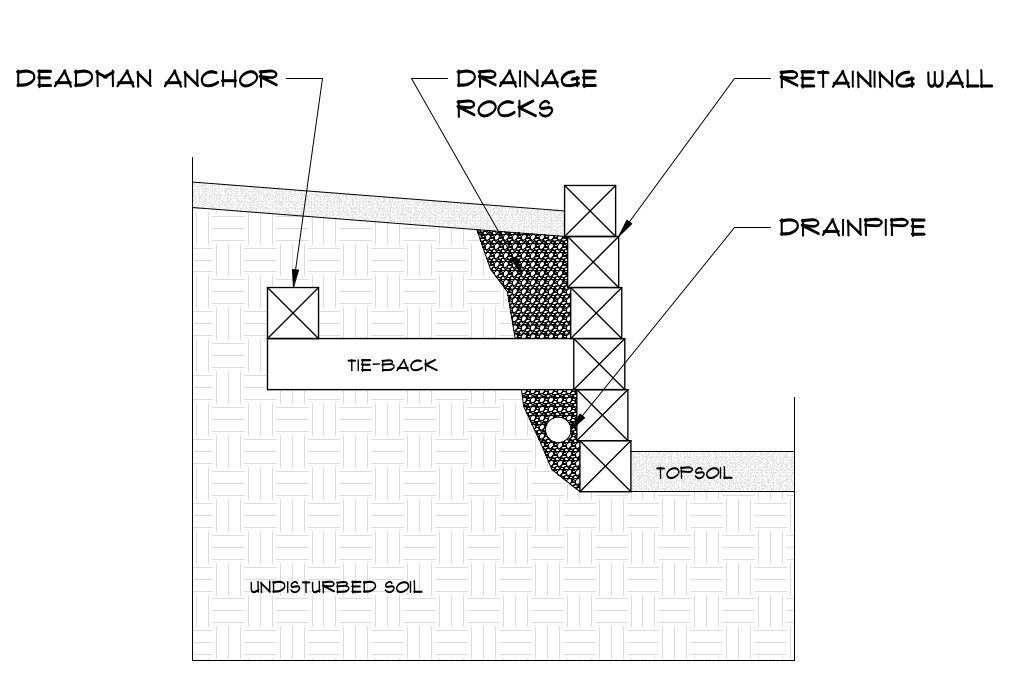
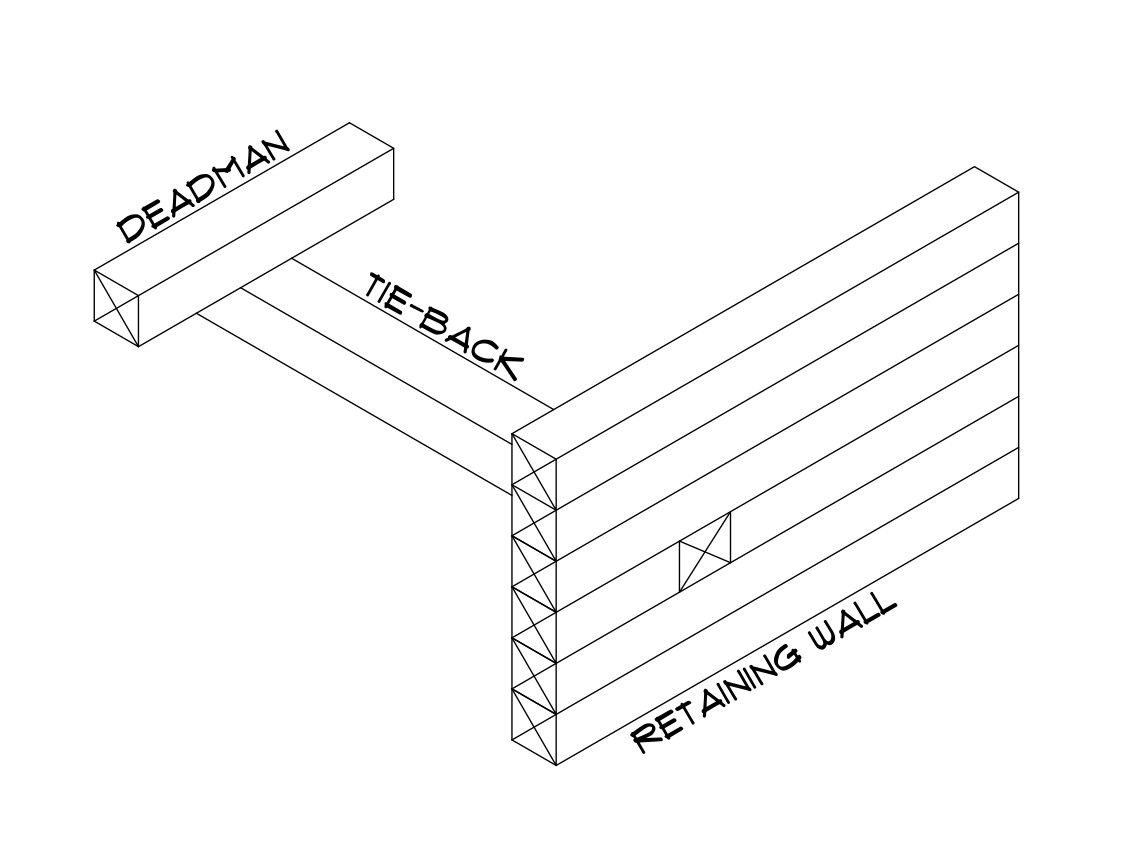
Erosion Control with Plants
Plants that have deep root systems are very helpful on slopes as their roots can help hold soil in place. Drought tolerant plants tend to have deep tap roots, and even in areas where drought is not an issue, plants that are native to hillsides will often have deep roots to help hold soil in place. Your choice of plants will be very specific to your region, so rather than list plants here, google plants for erosion control in your area. When creating a plant palette for a slope, use a mixture of tall shrubs and ground covers to slow down the velocity of rainfall.
Drainage
With sloped surfaces, stormwater can run-off the slope quicker than it can be absorbed by the soil. This can make it challenging to establish plants unless the right precautions are put in place. When planting trees or large shrubs, they should be planted in a "planting shelf" with berms on the downhill side to help retain water. Planting shelves are created by cutting the soil at the back of the planting area to create a level planting hole. The cut soil is then placed on the downhill side to level out that side and create the berm. If you install retaining walls to create multiple terraces, the terraces may already be level enough that the planting shelf is not needed.
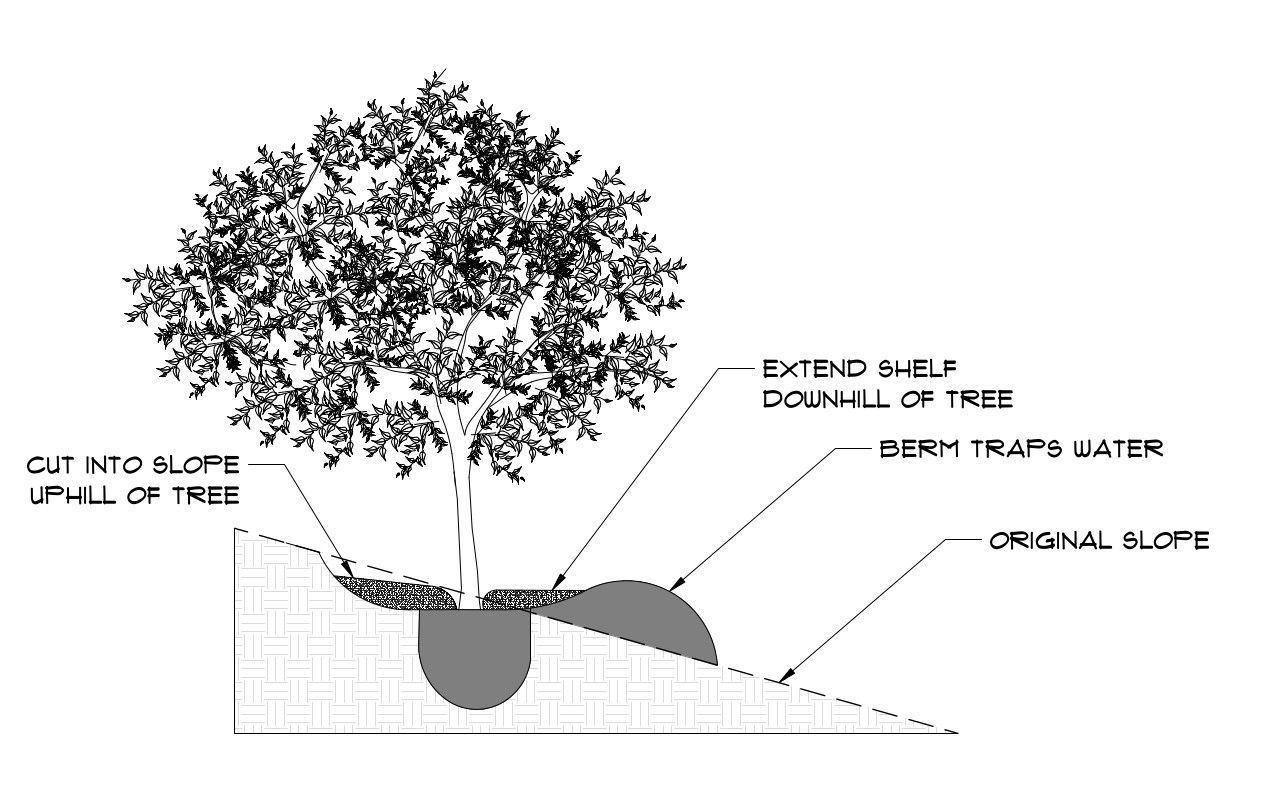
A planting shelf slows the downward velocity of stormwater on your slope. Slowing the velocity of water run-off is one of the best ways to prevent erosion. Using drainage rocks to create dry creeks or rain gardens can also be of benefit, but they will need to be designed to allow outflow of excess water rather than trying to absorb all the water into the ground.
Irrigation
In regions that have long dry periods, artificial irrigation is needed. For slopes, drip irrigation is the best method as it delivers moisture directly to the soil and does it very slowly which prevents run-off. Sprinklers will deliver too much water too quickly and will create the same run-off effect as rain. The amount of moisture that can be absorbed by the soil depends on the soil type: clay soils absorbs slowly and are prone to run-off, whereas fast-draining soils will absorb moisture more quickly. With drip irrigation, you have much more control over the delivery rate, so adjustments can be made as you observe how the water is absorbed by the soil.
When designing a garden on a slope, pay attention to water that comes down from the top of the slope, and where it is coming from. For example, in a hilly neighborhood it's not uncommon to find houses that are elevated from the street. In this scenario, check to see what happens when it rains, does it pour off the roof straight down into the ground? If a 1,000 sq ft roof receives 1" of rain, that is a total of 623 Gallons of water that is pouring onto your slope. Ideally, there should be rain gutters to capture the water and the drain pipes make the water run-off from the roof more manageable. This rainwater can be stored in barrels for later use, or the drainpipe directed to soak into a rain garden where it will slowly percolate into the ground and replenish groundwater.
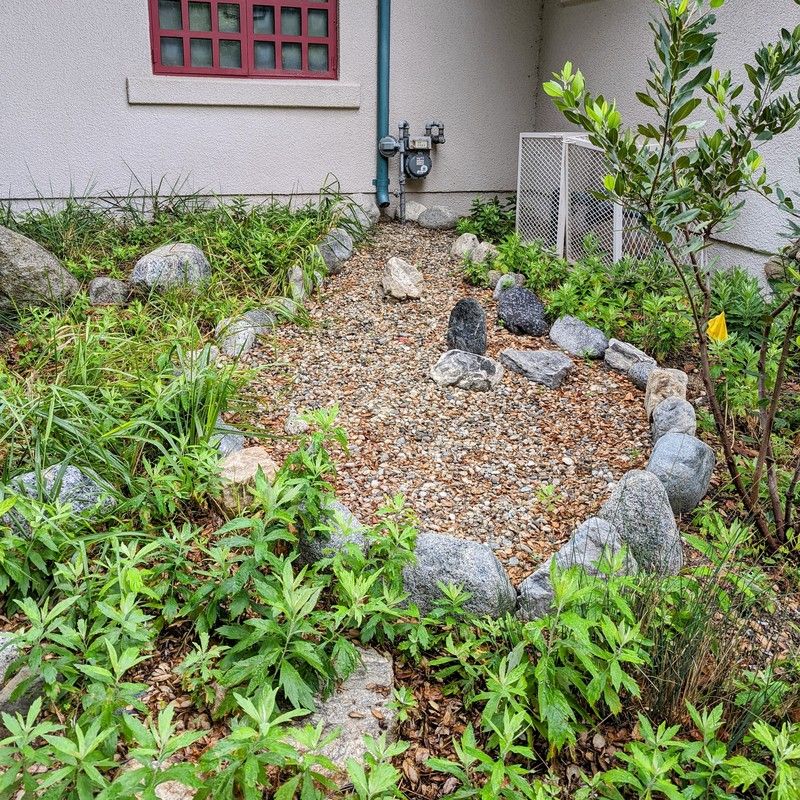
So, there you have it, these are the basic technical aspects to consider when preparing a slope for landscaping. Let us know in the comments below if you have any questions, or would like to add additional thoughts on this. In our next blog post, we will discuss the aesthetic aspects of designing a garden on a slope.



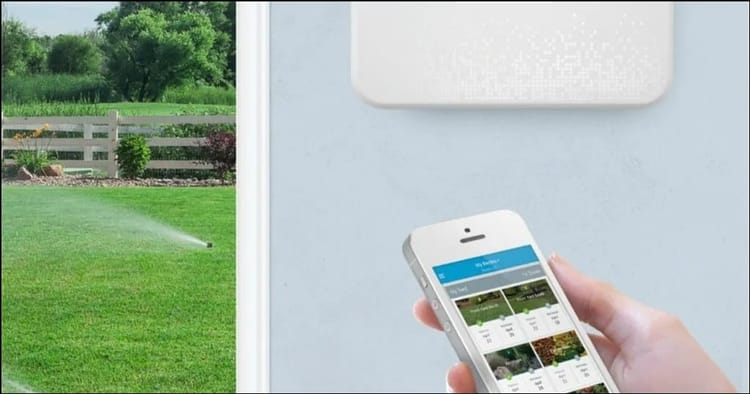
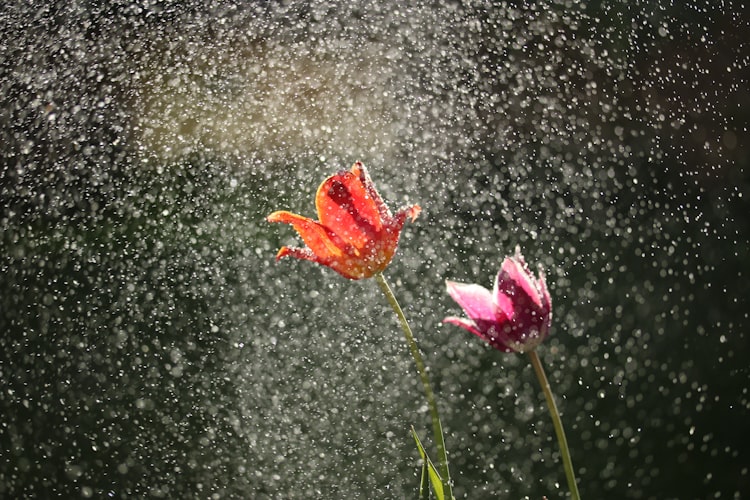

Comments ()